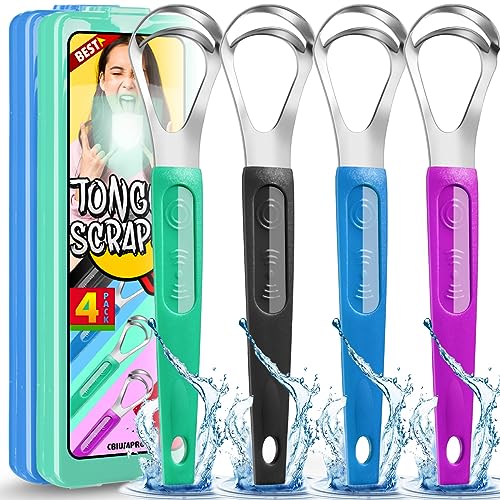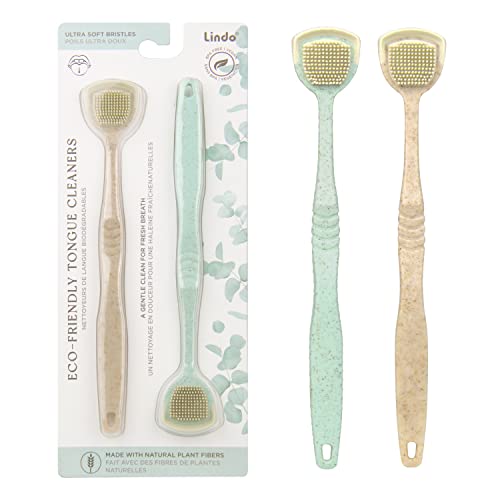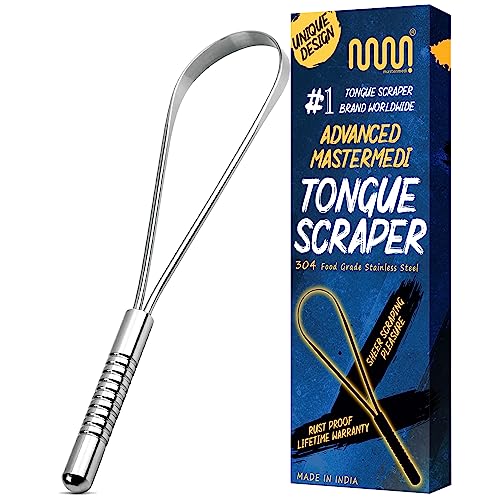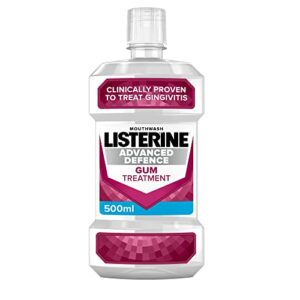In our step-by-step guide on how to safely sanitize tongue scraping tools, we aim to provide you with helpful instructions on properly cleaning and disinfecting these tools. Tongue scraping tools are commonly used to remove bacteria and debris from the surface of the tongue, promoting oral hygiene and fresh breath. However, it is important to maintain a clean and bacteria-free environment for these tools to ensure their effectiveness. Our guide offers simple and practical steps to help you sanitize your tongue scraping tools safely, so you can continue to enjoy the benefits of a clean and healthy mouth.
Enhance Your Oral Health with Ease
Step 1: Gather necessary materials
To ensure proper tongue scraping hygiene, start by gathering all the necessary materials. Here’s what you’ll need:
- Gentle soap or dishwashing liquid: Choose a mild soap that is suitable for cleaning your tongue scraping tools. Avoid using harsh chemicals or abrasive cleaners that could damage the tools.Example: Use a fragrance-free dishwashing liquid like Dawn or a gentle soap like Cetaphil.
- Warm water: Fill a sink or a basin with warm water. Ensure that the water is not too hot to handle comfortably.Example: Use lukewarm water to prevent any discomfort or burns.
- Clean towel or paper towels: Have a clean towel or paper towels ready for drying the tools after cleaning. Make sure they are free of any dirt or debris.Example: Use a fresh, white towel or a stack of paper towels.
- Clean container: Find a clean container to hold the tools while they dry. It should be large enough to accommodate the tools without crowding, and ideally have a lid to prevent any dust or contaminants from settling on them.Example: Use a sterilized glass or plastic container with a lid.
Now that you have gathered all the necessary materials, you are ready to move on to the next step of sanitizing your tongue scraping tools.
Step 2: Disassemble the tongue scraping tools
To carefully disassemble the tongue scraping tools, start by checking if there are any removable parts or detachable handles. These components may need to be taken apart for thorough cleaning or replacement. Refer to the manufacturer’s instructions for specific guidance if necessary.
For example, if your tongue scraper has a detachable handle, gently pull or twist it to separate it from the main body of the tool. Be cautious not to use excessive force, as this could damage the tool. If there are any other removable parts, such as a silicone or metal scraper head, follow the instructions provided to remove them properly.
It’s important to handle the disassembly process with care to ensure that the tools remain in good condition and can be reassembled easily. By taking the time to disassemble the tongue scraping tools correctly, you can maintain their effectiveness and prolong their lifespan.
Step 3: Wash with soap and water
To properly clean your tongue scraping tools, follow these simple steps. Begin by using warm water and a gentle soap or dishwashing liquid. Take each part of the tool and wash it thoroughly, making sure to pay special attention to any crevices or hard-to-reach areas. Use a soft brush or toothbrush to gently scrub away any debris or buildup that may be present.
Start by wetting the tools under warm running water. Then, apply a small amount of soap or dishwashing liquid to the bristles of your brush or toothbrush. Use the brush to scrub each part of the tool, ensuring that you cover all surfaces. Be especially thorough when cleaning any crevices or hard-to-reach areas, as these are often hotspots for bacteria buildup.
Continue to scrub the tools under running water, using your brush or toothbrush to remove any remaining debris. Rinse each piece thoroughly, making sure that all soap residue is washed away. Finally, pat the tools dry with a clean towel or allow them to air dry completely before storing them in a clean, dry place.
By following these steps, you can ensure that your tongue scraping tools are properly cleaned and ready for use. Remember to clean your tools regularly to maintain good oral hygiene and prevent the buildup of bacteria on your tongue scraper.
Step 4: Rinse off soap residue
To ensure a thorough clean, it is important to rinse off any soap residue from each part of the tools after washing. Begin by holding the tools under running water, allowing the water to flow over all surfaces. Use your hands or a soft brush to gently scrub away any remaining soap. Be sure to pay close attention to crevices and hard-to-reach areas where soap residue may accumulate.
Continue rinsing until all traces of soap have been completely washed away. Take your time and ensure that no residue is left behind, as even a small amount could potentially be harmful if ingested. Once you are confident that all the soap has been rinsed off, you can proceed to dry the tools thoroughly before storing them. By following these steps, you can ensure that your tools are not only clean but also safe to use.
Step 5: Dry the tools
To dry the tools after rinsing, follow these steps:
- Grab a clean towel or some paper towels.
- Gently pat the tools dry using the towel or paper towels. Make sure to wipe all surfaces, including handles, blades, and any other parts.
- Pay attention to hard-to-reach areas, such as crevices or joints. These can trap moisture and lead to bacterial growth.
- If necessary, use a small brush or cotton swab to remove any remaining moisture from tight spaces.
- Ensure that all the tools are completely dry before storing them. Check for any signs of dampness or wetness.
- If you’re using paper towels, remember to discard them in the appropriate waste bin after use. This helps maintain cleanliness and hygiene in your workspace.
By thoroughly drying the tools, you prevent moisture buildup and reduce the risk of bacteria growth. This step is crucial for maintaining the cleanliness and longevity of your tools.
Step 6: Store in a clean container
To properly store your tongue scraping tools after they have been dried, follow these simple steps:
- Check if any parts of your tongue scraping tools need to be reassembled, such as detachable handles or heads. If so, securely put them back together.
- Find a clean container that is specifically designated for storing your tongue scraping tools. Make sure it is dry and free from any contaminants.
- Gently place the tongue scraping tools into the container, ensuring that they are not overcrowded or touching each other too closely.
- Seal the container tightly to prevent any dust, debris, or moisture from entering.
- Store the container in a clean and dry location, away from any sources of contamination or humidity.
By following these steps, you can ensure that your tongue scraping tools are properly stored, ready for use, and protected from any potential contaminants.
Final thoughts and recommendations
In conclusion, we hope that this guide has provided you with the necessary steps to safely sanitize your tongue scraping tools. We understand the importance of maintaining good oral hygiene and preventing the spread of bacteria. By regularly cleaning and sanitizing your tools, you can ensure their effectiveness and protect your oral health. However, it is essential to always refer to the manufacturer’s instructions for specific care and cleaning recommendations, as different tools may have different requirements. Remember, taking care of your tongue scraping tools means taking care of your overall well-being.
Essential supplies
Keeping Your Tools Clean
Step-by-Step Guide to Using Tongue Scraping Tools
- First, make sure to choose a tongue scraper that is comfortable for you to hold. There are different types available, such as metal or plastic, so choose one that suits your preference
- Start by rinsing your mouth with water to remove any food particles or debris. This will help in achieving a cleaner scraping experience
- Hold the tongue scraper at the back of your tongue and gently drag it forward towards the tip. Apply light pressure and be careful not to scrape too hard, as it may cause discomfort or even injury
- Repeat the scraping motion 5-10 times, rinsing the scraper in between each scrape to remove any buildup. Focus on the central and lateral parts of your tongue, as these areas tend to accumulate the most bacteria and debris
- After you have finished scraping, rinse your mouth thoroughly with water or mouthwash to remove any residue. Remember to clean your tongue scraper with water and a mild soap before storing it properly
- We hope these steps help you in using tongue scraping tools effectively. Happy tongue scraping!
Answers to your questions about tongue scraping tools
Are you aware that tongue scraping tools can help improve oral hygiene?
Yes, we are aware that tongue scraping tools can indeed help improve oral hygiene. Using a tongue scraper is an effective way to remove bacteria, food particles, and dead cells that can accumulate on the surface of the tongue. These tools are designed to gently scrape the tongue, reducing the buildup of plaque and bacteria that can cause bad breath, tooth decay, and other oral health issues. Incorporating tongue scraping into a daily oral hygiene routine, along with brushing and flossing, can help maintain a clean and healthy mouth.
Are you curious about the long-term benefits of using tongue scraping tools?
We understand that you may be curious about the long-term benefits of using tongue scraping tools. Tongue scraping is a practice that has been used for centuries in various cultures, and it is believed to have several potential benefits for oral health.
One of the main benefits of tongue scraping is the removal of bacteria and toxins from the surface of the tongue. The tongue can harbor a significant amount of bacteria and debris, which can contribute to bad breath, dental issues, and overall oral health problems. By regularly scraping the tongue, you can help reduce the buildup of these substances and maintain a cleaner and healthier mouth.
Moreover, tongue scraping can also improve your sense of taste. The accumulation of bacteria and debris on the tongue can affect your ability to taste food properly. By removing the buildup, you may experience a heightened sense of taste and enjoy your meals more.
Additionally, tongue scraping may help prevent the formation of a coating on the tongue, which is commonly associated with conditions like oral thrush or a yeast infection. By removing this coating, you can reduce the risk of developing such conditions and maintain a healthier oral environment.
While there is anecdotal evidence supporting the long-term benefits of tongue scraping, it is important to note that scientific research in this area is limited. Further studies are needed to fully understand the extent of the benefits and potential risks associated with tongue scraping.
In conclusion, tongue scraping is believed to have several potential long-term benefits for oral health, including the removal of bacteria and toxins, improvement in taste sensation, and prevention of tongue coating. However, it is always best to consult with a dental professional for personalized advice and guidance on maintaining good oral hygiene practices.




























